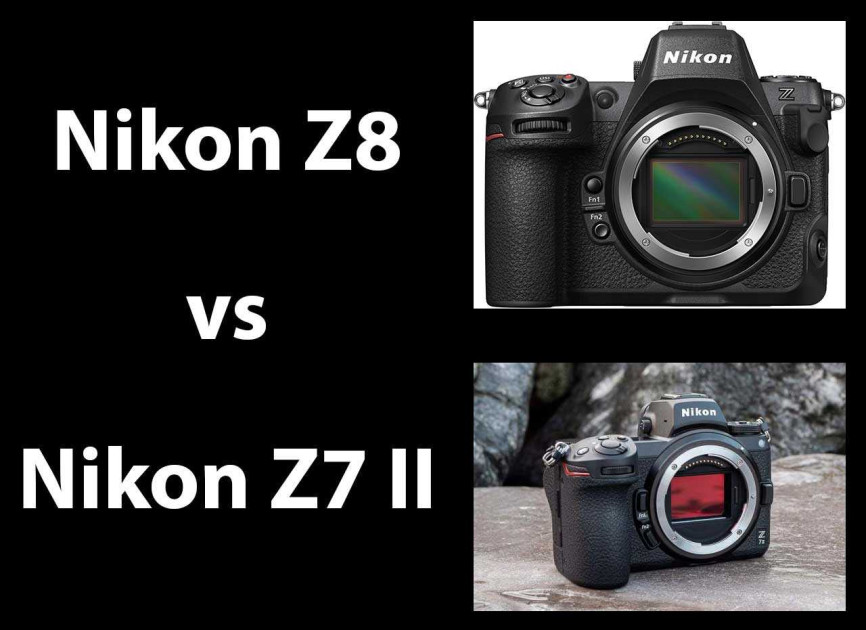
The Nikon Z7 II was first announced on October 13, 2020 as a new flagship 35mm full-frame mirrorless camera. Fast forward nearly three years and the new Nikon Z8 has arrived, which sits just above the Z7 II in the Nikon pecking order.
Now that we know everything about the Z8 and Z7 II cameras, it’s clear that they actually quite a lot of similarities when it comes to their core specifications and features, so which one should you pick?
We’re bringing you this in-depth Nikon Z8 vs Nikon Z7 II head-to-head comparison to help you choose between these two full-frame mirrorless cameras.
You can also read our detailed Nikon Z7 II review to find out exactly what we think of it.
Sensor
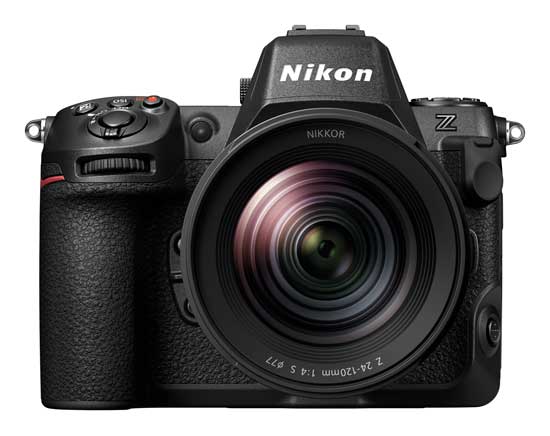
Both the Nikon Z8 and Nikon Z7 II offer the same number of megapixels, 45.7 to be precise, but the type of sensor that they use is different.
The new Z8 uses exactly the same 45.7 megapixel stacked BSI CMOS image sensor as the flagship Z9, while the Z9 II does not use a stacked sensor.
A stacked sensor improves the image quality with higher pixel numbers compared to a conventional CMOS sensor, increases the imaging speed for faster burst shooting, and improves the low-light-imaging capability.
Processor
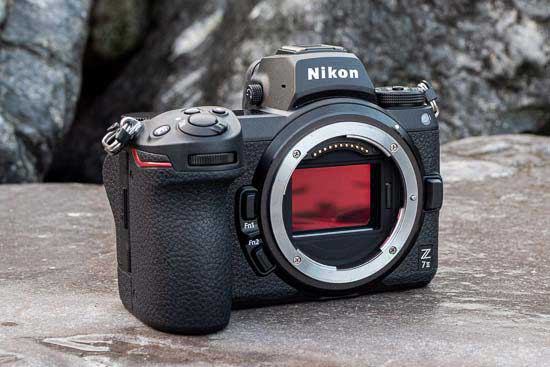
The new Z8 uses Nikon’s most powerful EXPEED 7 processor, just like the flagship Z9.
The Z7 II uses not one, but two EXPEED 6 processors, one of the biggest upgrades compared to the original Z7.
Despite having two processors, though, the cutting-edge EXPEED 7 processor makes the Z8 even faster and more capable than the Z7 II, supporting 8K video, faster burst rates and a larger buffer, amongst other advantages.
ISO Range
The native ISO range of both the Nikon Z8 and the Z7 II is 64 to 25,600, which can be expanded down to ISO 32 and up to 102,400 on each camera.
Video Recording
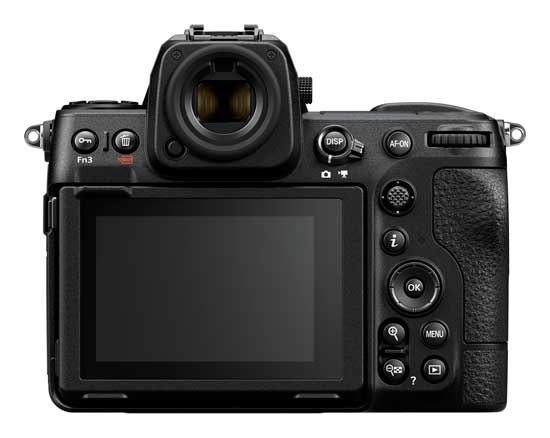
The new Z8 is the second ever Nikon camera to offer 8K recording – UHD 8K 60p/30p/24p video can be recorded with no crop – following the lead of the flagship Z9.
If you’re primarily interested in 4K UHD, the Z8 offers a variety of frame rates up to 120p, again using the entirety of the frame with no crop factor.
Internal recording with 10-bit color and 4:2:2 sampling is supported via the ProRes 422 HQ and H.265 codecs.
The Z8 can record 8K/30p for 90 minutes and 4K/60p for over 2 hours without overheating.
The Z7 II supports up to to 4K/60p recording, up from 4K/30p on the original model, with a slight 1.08x crop applied.
Sadly, it’s still only 8-bit internal, with
10-bit color only available to an external recorder over HDMI.
Raw video can be enabled via a firmware update, but it is only available as a paid service (dubbed the RAW Video Output Update).
Burst Shooting
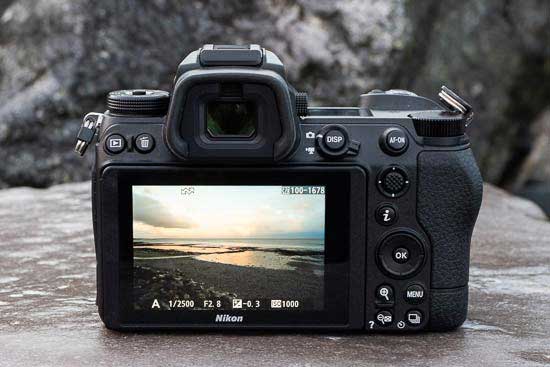
The continuous shooting capability is one area where the Nikon Z8 has a very clear advantage over its older sibling.
The Z8 offers 120fps burst shooting – yes, 120fps – but only at 11 megapixel resolution.
If you choose to shoot full-resolution 45 megapixel JPEGs, the rate drops to a still impressive 30fps, and then down again to 20fps for full-resolution 45 megapixel Raw files.
By contrast, the Z7 II only achieves 10fps at its fastest setting in the Continuous H (extended) burst shooting mode (continuous AF but with exposure locked at the first frame).
Autofocus
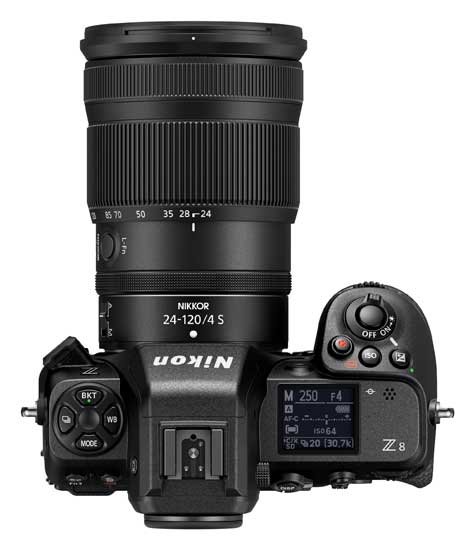
The new Z8 has exactly the same 493-point Phase-detect AF system as the Z7 II, which includes 405 auto-area AF points with 100% frame coverage, so both cameras offer the same snappy performance, being able to focus on a wide variety of subjects with the minimum of fuss.
The Z7 II can focus all the way down to -4EV when paired with an f/2 lens in the special Low Light AF mode. Even more impressively, the Nikon Z8 can focus in light levels as low as -9EV when used in the Starlight mode.
AI-powered subject tracking on the Z8 works for humans, dogs, cats and birds, the latter even in flight. plus vehicles, including planes, trains, bicycles, motorbikes and aircraft, whilst the Z7 II only recognises humans, dogs and cats.
Body and Design
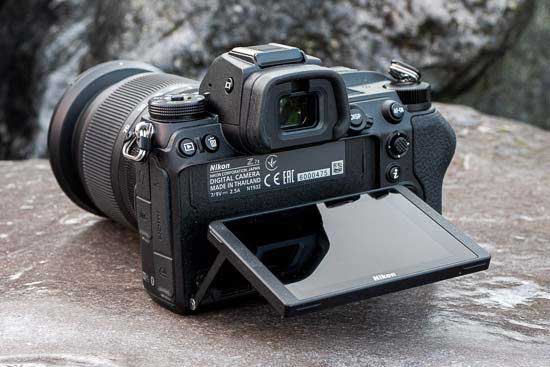
The Z8 is significantly larger than the Z7 II which now sits below it in the range, and at 910g it weighs a lot more too – almost 300g in total.
It’s a bigger, heavier camera than the Z7II with more external controls that more closely resembles the flagship Z9, just without the integrated vertical grip.
The Z8 also offers something that no other Nikon camera currently has, namely not one but two USB terminals.
There’s the usual USB-C charging terminal plus a new super-speed USB communication terminal which makes the Z8 the first Nikon camera to feature USB-C to ethernet connectivity via an adapter (not supplied).
Viewfinder
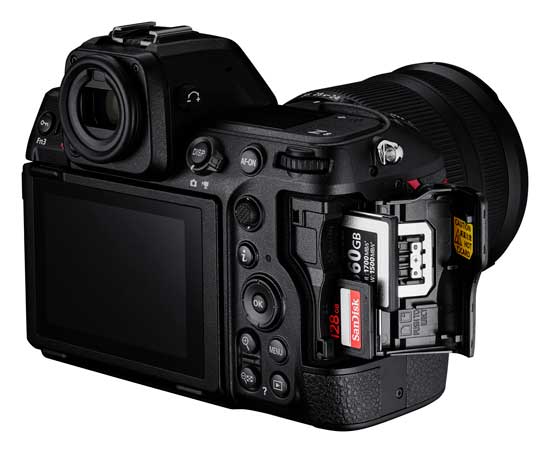
The Z8 and Z7 II share exactly the same 3.6m-dot electronic viewfinder, which offers 100% horizontal and vertical coverage, 0.80x magnification and 21mm eyepoint.
The key difference between them is that the Z8’s EVF refreshes at 120fps, whereas the Z7 II is limited to 60fps.
So looking through the viewfinder of both cameras will offer almost, but not quite, the same experience.
LCD Screen
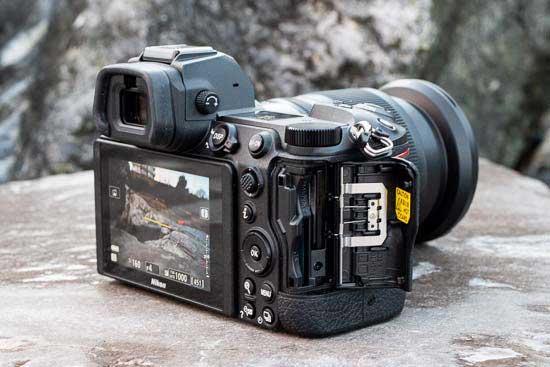
The Z7 II has a 3.2-inch touchscreen LCD on the rear that can be usefully tilted through 170 degrees, with 2.1-million dot resolution.
The Z8 has a rather more complex four-axis vertically and horizontally tilting screen that’s the same size and resolution as the one on the Z7 II.
Whilst not quite as versatile as a fully articulating, vari-angle LCD screen, both screens work very well for both portrait or landscape-orientation shooting.
You can tilt it upwards to face you in either mode, whilst still being centrally located which make it easier to compose with than a screen that flips out to the side.
Memory Cards
Both cameras have one UHS-II SD card slot and one ultra-high speed CFexpress Type B slot to better support their advanced video and burst shooting modes.
Battery Life
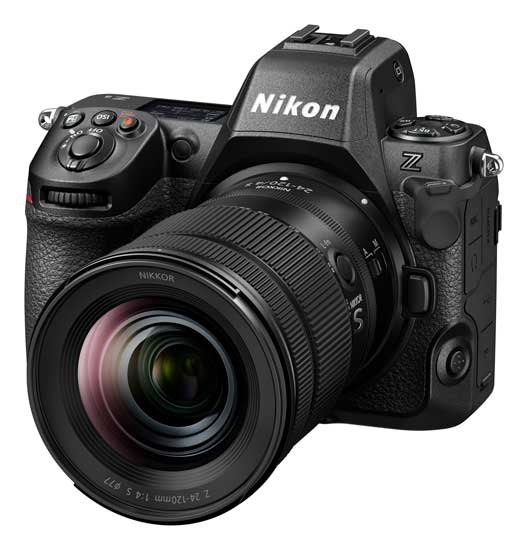
Both the older Z7 II and the new Z8 use the latest Nikon battery, called the EN-EL 15C.
This allows either camera to be powered by USB whilst you are using it, which is especially handy for timelapse photography or video and for travel photography when carrying a powerful powerbank.
It provides a CIPA-approved lifespan of 310 stills or 85 mins of video when using the EVF.
Note that the Z7 II and Z8 can also use the older EN-EL 15B variant, but as you’d expect, you won’t get USB charging then.
Battery Grip
Optional battery grip are available for both cameras, complete with vertical controls and the ability to hot-swap batteries without losing power, allowing you to emulate the size and feel of the flagship Z9 dual-grip camera.
Price
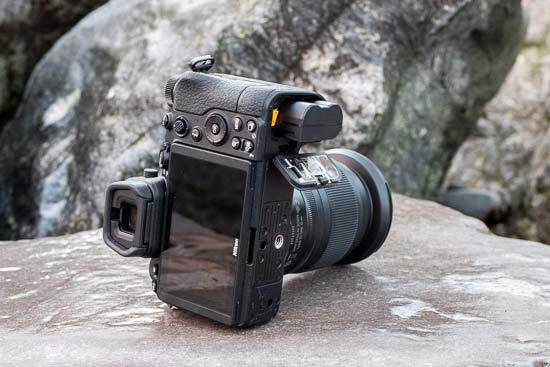
The Z7 II was priced at £2,999 / $2,995 body only when it was launched two years ago, and it still costs that much even today.
The new Z8 is rather aggressively priced at £3,999 / $3,999 body only, neatly splitting the difference between the Z7 II and the Z9.
Conclusion
The new Z8 seamlessly slots into the Nikon range between the cheaper, smaller Z7 II and the more expensive, larger Z9. It offers almost all of the performance of the Z9 in a similar, more conventional form-factor to the Z7 II.
So what do you think? Would you choose the new Nikon Z8 or the Nikon Z7 II, and why? Leave a comment below!
Your Comments
Credit : Source Post



